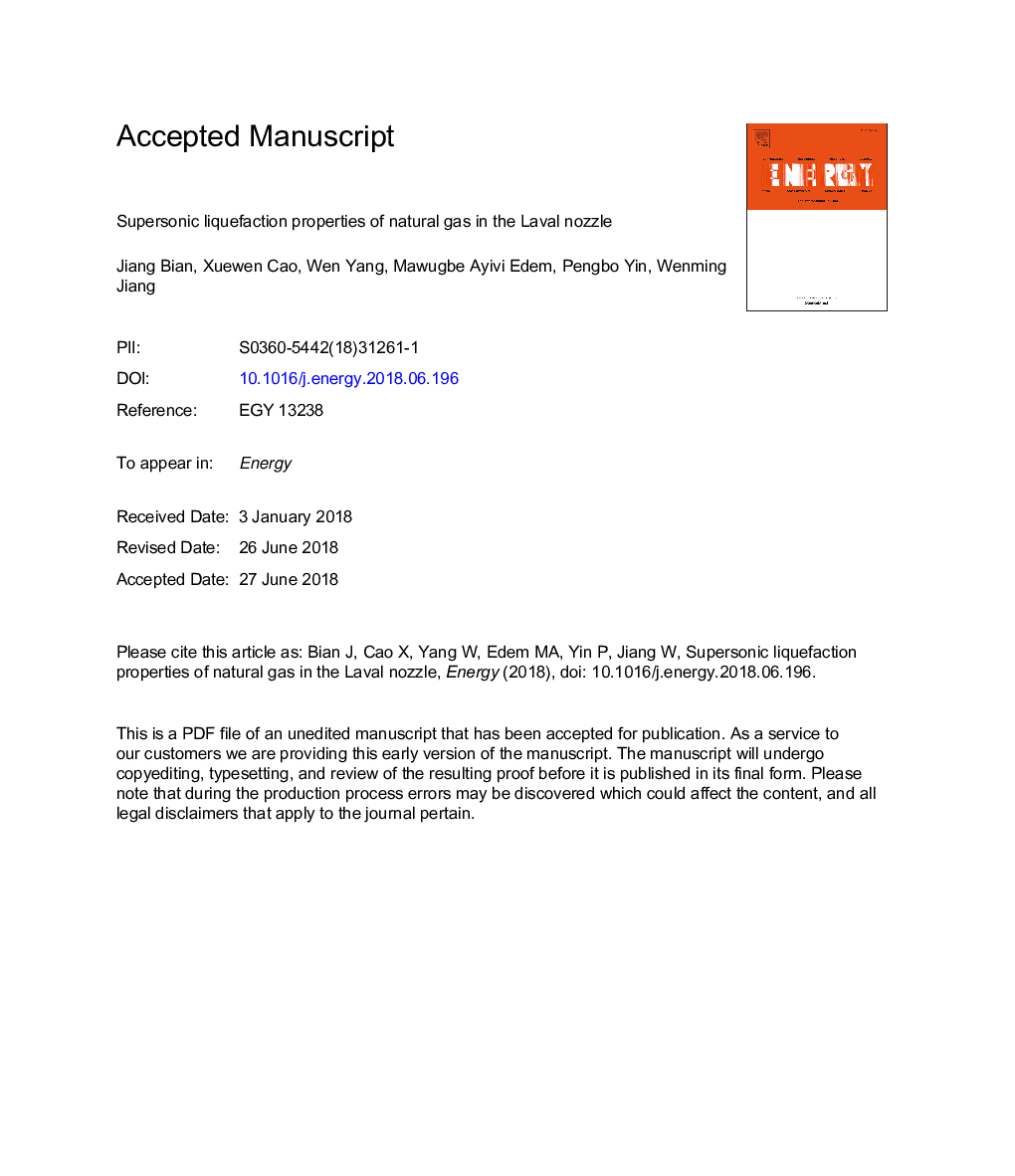| Article ID | Journal | Published Year | Pages | File Type |
|---|---|---|---|---|
| 8071087 | Energy | 2018 | 27 Pages |
Abstract
In view of the excellent performance of the supersonic separator for natural gas dehydration, a new type of natural gas liquefaction process using the Laval nozzle is proposed in this paper. Theoretical and numerical studies of the supersonic flow and liquefaction process of the methane-ethane binary system in this nozzle are carried out. The effects of the inlet temperature, inlet pressure, back pressure and component composition on the liquefaction process are analyzed. The results show that the critical liquefaction temperature and pressure of the methane-ethane binary system decrease under low inlet temperature or high inlet pressure conditions and the range of the liquid phase region increases, which promotes the liquefaction process. With the increase of the back pressure of the nozzle, the position of the shock wave moves forward and the liquefaction environment is more completely destroyed. For a multi-component natural gas, in which the heavy hydrocarbon content is high, natural gas is more easily liquefied using the Laval nozzle. The liquefaction efficiency range of the newly designed liquefaction process with the Laval nozzle are 0.0795-0.1321 (HYSYS results) and 0.0718-0.1505 (MATLAB results) when the inlet pressure of the process is 2-5â¯MPa. The nozzle more easily achieves liquefaction compared with a throttle under the same conditions.
Related Topics
Physical Sciences and Engineering
Energy
Energy (General)
Authors
Jiang Bian, Xuewen Cao, Wen Yang, Mawugbe Ayivi Edem, Pengbo Yin, Wenming Jiang,
